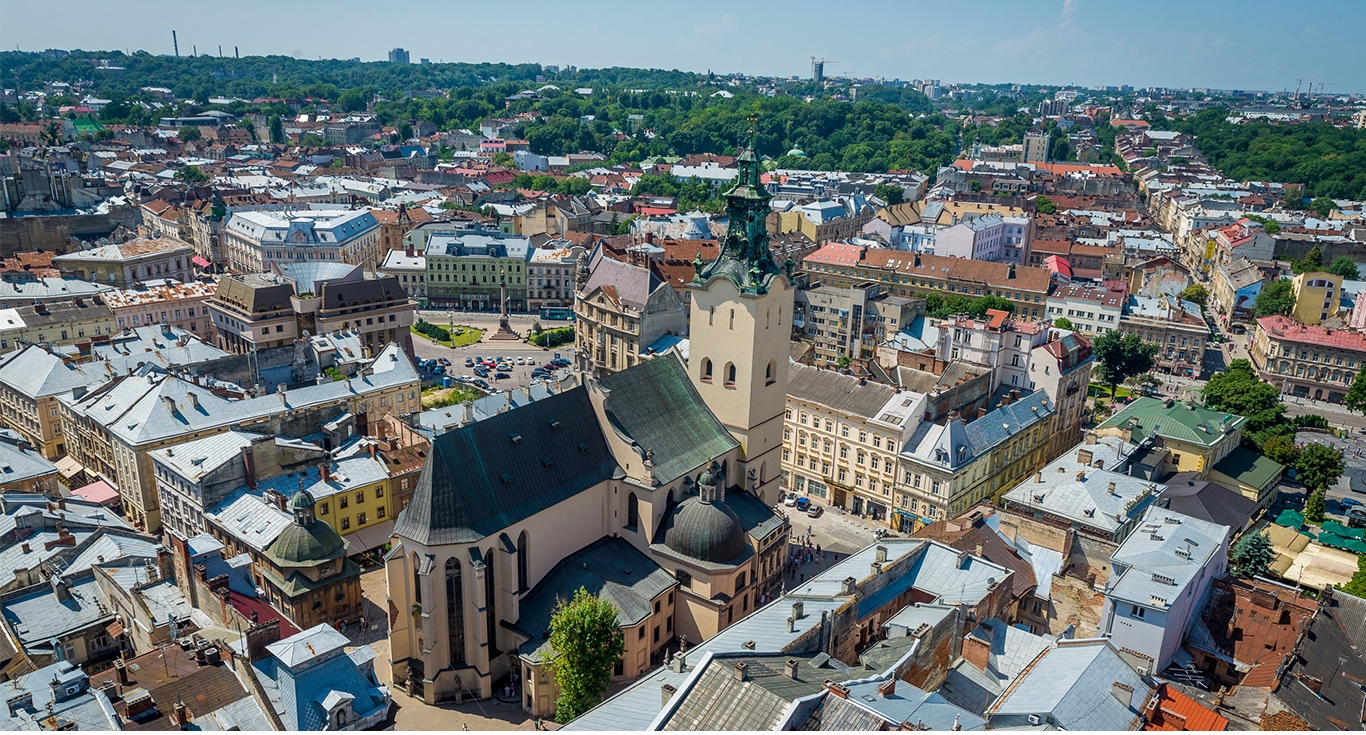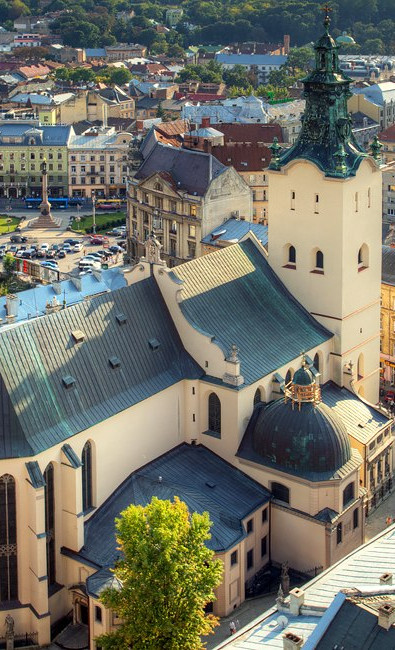Латинський катедральний костел
The Latin Cathedral presents a grand monument of the 14-18th centuries which harmoniously combines the architectural features of past epochs: Gothic, Renaissance, and Baroque.
The Latin Cathedral (1 Cathedral Square) presents a grand monument of the 14-18th centuries which harmoniously combines the architectural features of past epochs: Gothic, Renaissance, and Baroque.The Cathedral was the central building of the medieval city; neither money nor time was spared in its construction. Because the process of its construction lasted much longer than the lifespan of a human being none of its master-builders lived to see the fruits of their labour in its complete form. The construction of the city’s main church was launched in 1360. According to initial plans, it should have had two grand belfries. One of these was constructed by the end of the 14th century, while the other was never completed.
The stylistic path of the Lviv Cathedral has wound its way through the Gothic, the Renaissance and Baroque periods, and it even demonstrates elements of Classicism and Secessionism. Strange as it may seem we do not feel any competing eclecticism here: various styles belonging to different ages do not wildly contrast, nor do they overwhelm each other. On the contrary, the passing of time has harmoniously assembled all of the architectural layers left by different epochs into one magnificent whole.
The Lviv Cathedral inherited its elongated lancet arches, vaulting and windows from the Gothic period of the 14th and 15th centuries; the windows are decorated with modern stained glass dating back to the beginning of the 20th century. The Renaissance Chapel of the Kampian family dating back to the 17th century is decorated with marvellous stone carving featuring themes from the Gospel. Restoration performed in 1760-1778 gave the cathedral its Baroque flavour.
On the eastern wall of the cathedral, from the side of Halytska Street, one can see an icon with an inscription. This inscription describes a tragic and moving story that happened in Lviv over four centuries ago. In 1598, 9-year-old Katrusya, the daughter of burgher Wojciech Domagalicz, died of an incurable illness. The girl’s broken-hearted grandfather, a famous geometrician of Lviv, Jozef Wolfowicz, painted the icon of Our Lady of Tenderness and mounted it on the cathedral’s wall. This icon is a copy of the original.
On the same eastern wall one can also see the built-in gravestone of the Szolc-Wolfowicz family, a Lviv merchant family of the 15th century. It was left over from the cemetery surrounding the cathedral that was eliminated at the end of the 18th century. The northern wall features a sculpture of the Lord's Grave dating to the 16th century.
Cannonballs hanging on the cathedral’s eastern wall remind us about the most terrible Turkish siege of Lviv in 1672. The largest cannonball, which hangs on the wall nearest the tramline, recalls these events with the inscription: Ex obsidione turcica, (“from the Turkish siege”), Anno Domini 1672, the 28th of September.
A shell higher in the wall bears the inscription Ex obsidione ruthenorum (from the Ukrainian siege of the 5th of March 1919), a reminder of the Ukrainian-Polish war of 1918-1919.
The Lviv Cathedral offers Liturgy in the Latin rite.



